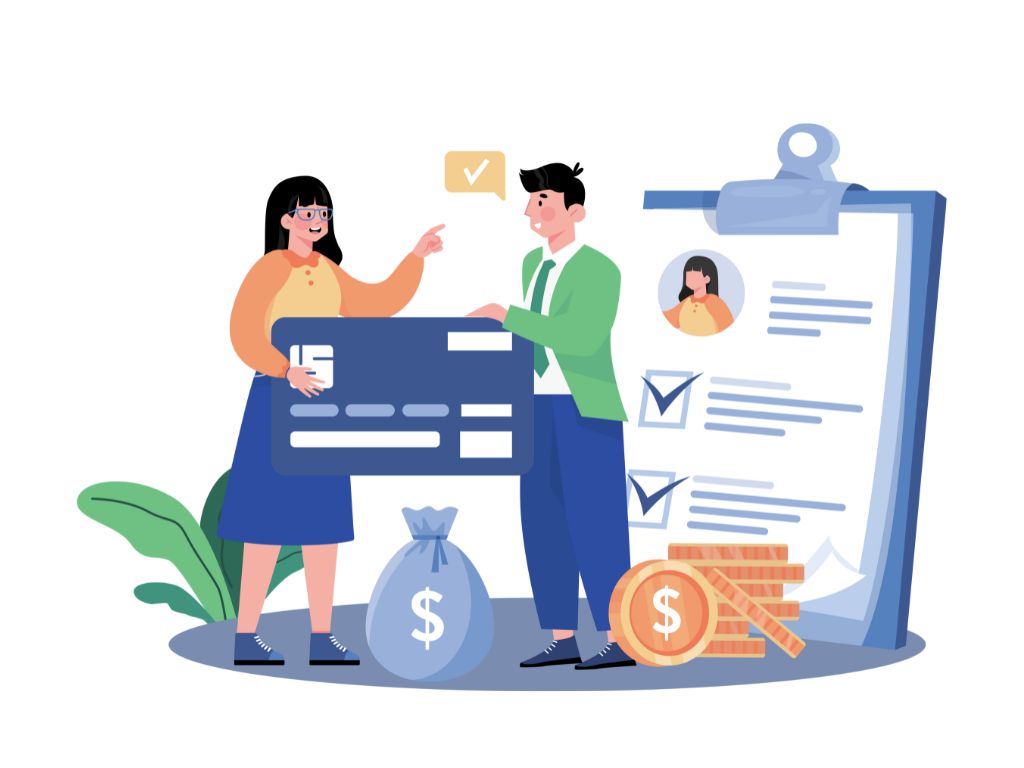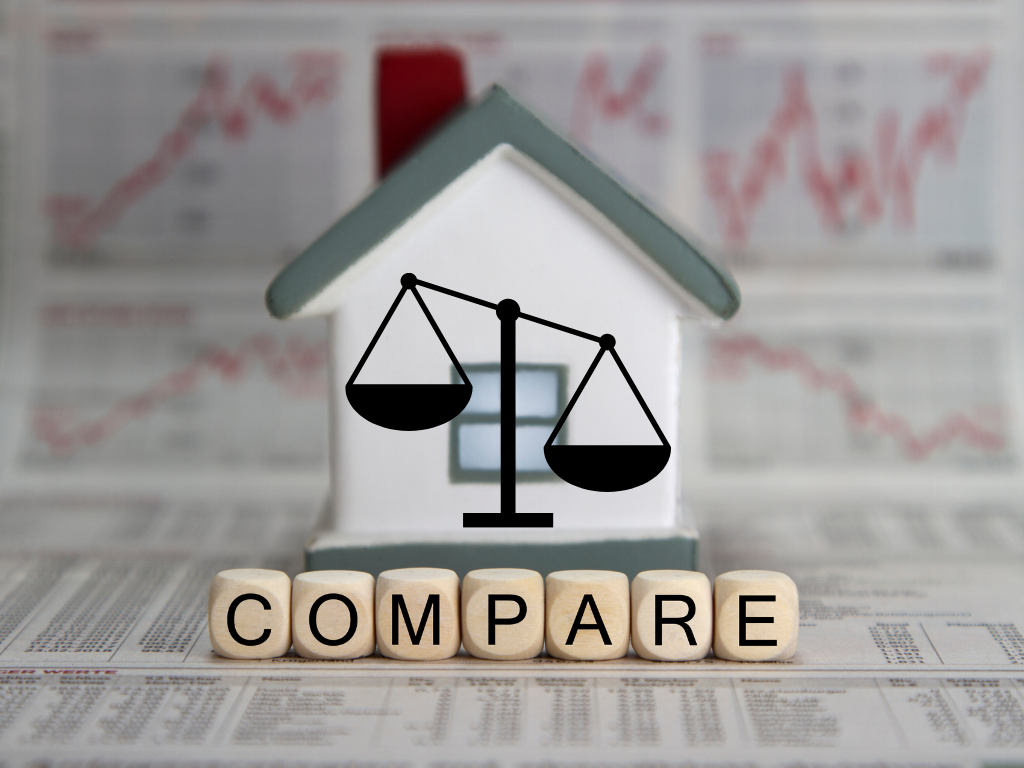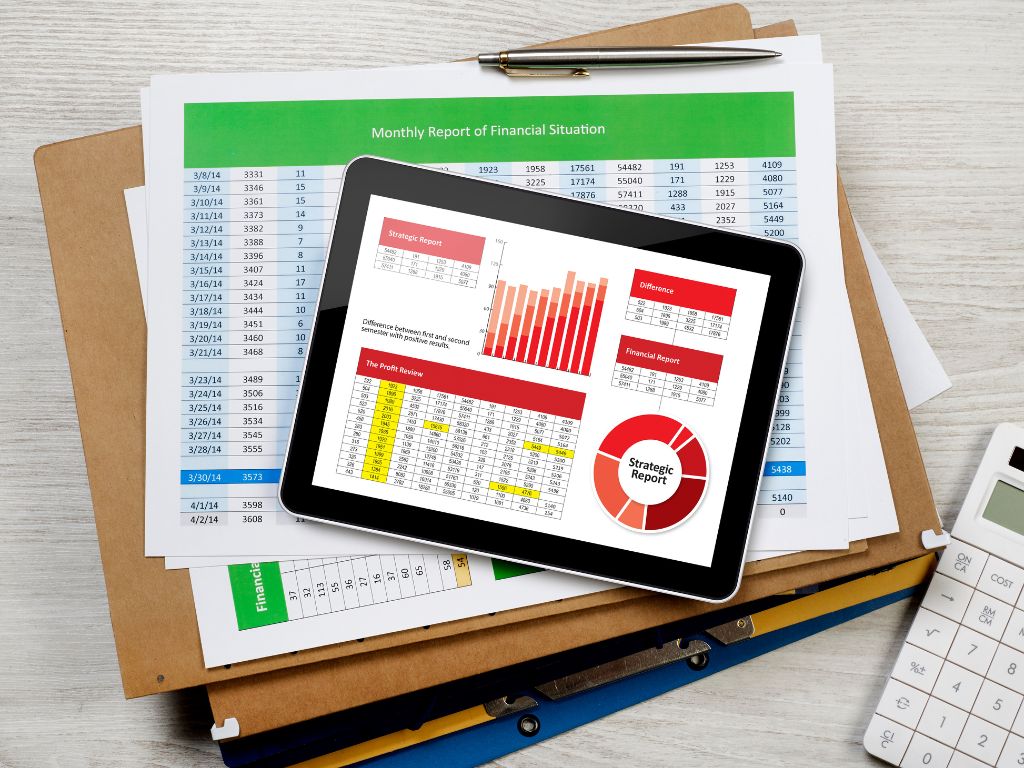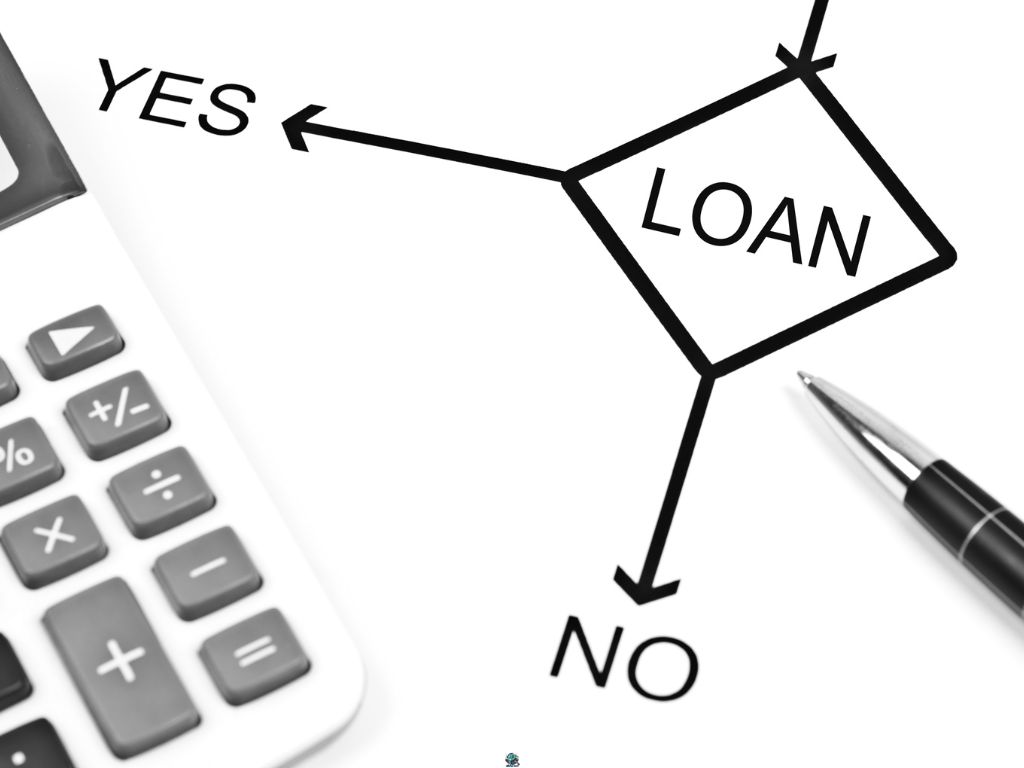Introduction
Choosing between a personal loan and a line of credit can feel confusing especially if you’re not sure how they differ. While both options let you borrow money, they serve different needs and work in distinct ways.
A personal loan gives you a fixed amount upfront, while a line of credit gives you flexible access to funds over time.
This article explains how each option works, when one might make more sense than the other, and what you need to know to make the best choice based on your financial situation.
If you’re comparing personal loan vs line of credit, this guide gives you everything you need to understand both products clearly.
Key Takeaways
Personal Loan vs. Line of Credit
- A personal loan is a lump-sum loan with fixed payments, ideal for one-time expenses like debt consolidation or home improvements.
- A line of credit is a revolving credit account you can draw from as needed, best for ongoing or unpredictable expenses.
- Personal loans offer predictable payments and potentially lower rates if you have good credit.
- Lines of credit offer more flexibility but often come with variable rates and require strong credit profiles.
- Your choice depends on how much you need, how often you need it, and your ability to manage repayment.
Disclaimer: This site contains affiliate links. If you make a purchase, we may earn a commission at no extra cost to you.

What Is a Personal Loan vs Line of Credit?
When comparing a personal loan vs line of credit, the key difference lies in how the funds are accessed and repaid.
What Is a Personal Loan?
A personal loan is a fixed-term loan where you borrow a lump sum and repay it in regular monthly installments. The loan comes with a fixed interest rate, making your payments predictable. Personal loans are often used for large expenses like debt consolidation, home repairs, or medical bills.
According to Experian, personal loans remain one of the most common tools for debt consolidation because of their fixed payments and predictable payoff timeline.
Because they are installment loans, they end once the balance is fully repaid. This structure makes them ideal when you know exactly how much money you need and want a clear repayment schedule.
What Is a Line of Credit?
A line of credit is a revolving account that lets you borrow as needed, up to a set limit. You only pay interest on what you use, and as you repay, your available credit replenishes. Think of it like a credit card, but with different terms and often lower interest rates.
Lines of credit are best for covering ongoing or unpredictable costs, like business expenses or irregular cash flow needs. Many financial advisors recommend them for freelancers and small business owners who deal with seasonal income changes or delayed client payments.
They’re more flexible than personal loans but may come with variable interest rates and tougher approval requirements.

Key Differences: Personal Loan vs Line of Credit
Let’s break down the most important differences between a personal loan and a line of credit so you can decide which fits your needs best.
1. Borrowing Structure
- Personal Loan: You receive a one-time lump sum that’s repaid in fixed monthly payments over a set term.
- Line of Credit: You borrow what you need, when you need it, up to your approved credit limit. As you repay, funds become available again.
2. Interest Rate Type
- Personal Loan: Typically comes with a fixed interest rate, so your monthly payment stays the same.
- Line of Credit: Often uses a variable interest rate, which can change over time and affect your payment amount.
3. Repayment Terms
- Personal Loan: Has a defined start and end date. Once paid off, the loan is closed.
- Line of Credit: Offers open-ended borrowing. You can borrow and repay repeatedly, making it more flexible but less predictable.
4. Use Cases
- Personal Loan: Best for one-time needs like consolidating debt, paying off a large bill, or funding a project.
- Line of Credit: Ideal for ongoing expenses like home improvements or small business operations.

⚖️ Key Differences Recap: Personal Loan vs. Line of Credit
| Feature | Personal Loan | Line of Credit | What It Means for You |
|---|---|---|---|
| Loan Type | Fixed lump sum disbursed upfront. | Revolving credit line you can draw from repeatedly. | Choose a personal loan if you know exactly how much you need; a line of credit if your expenses vary over time. |
| Repayment Structure | Fixed monthly payments over a set term (e.g., 12–84 months). | Flexible payments that adjust based on what you borrow. | Personal loans simplify budgeting; lines of credit require active management. |
| Interest Rate | Usually fixed, offering predictable costs. | Often variable, may rise or fall over time. | Fixed rates suit stable planners; variable rates reward disciplined borrowers who repay quickly. |
| Access to Funds | One-time disbursement when the loan is approved. | Ongoing access — borrow, repay, and borrow again. | Lines of credit offer convenience but can tempt overspending. |
| Best For | Large, one-time expenses like renovations or debt consolidation. | Flexible or recurring expenses, such as home projects or business cash flow. | Match your loan type to your spending pattern, not just the rate. |
| Discipline Required | Moderate — structure is built in with a clear payoff timeline. | High — freedom to draw funds requires strong financial control. | If you struggle with limits, a personal loan helps keep you accountable. |
Summary Insight:
A personal loan fits when you need structure, a fixed term, and clear repayment goals.
A line of credit is better for flexible access and unpredictable expenses, but it demands discipline, awareness of variable rates, and careful tracking.

When to Choose a Personal Loan vs Line of Credit
Understanding when to use each option helps you borrow smarter.
Choose a Personal Loan If:
- You need a fixed amount of money for a single purpose (like consolidating debt or making a big purchase).
- You want a predictable repayment schedule and a fixed interest rate.
- You prefer the discipline of structured payments and a clear payoff date.
Choose a Line of Credit If:
- You have recurring or unpredictable expenses (like ongoing home repairs or business needs).
- You want the flexibility to borrow only what you need, when you need it.
- You’re confident in managing a variable interest rate and irregular payments.
A personal loan is better for structured borrowing. A line of credit is better for flexibility.

Which Is Easier to Qualify For?
Qualifying for a personal loan vs line of credit depends on your credit score, income, and overall financial profile but there are some key differences.
- Personal Loan: Lenders may approve borrowers with fair to good credit more easily because the loan has a fixed amount and predictable repayment. Some lenders offer personal loans for credit scores as low as 580.
- Line of Credit: Lines of credit usually require stronger credit scores, often above 670, especially if the credit line is unsecured. Data from TransUnion suggests that lenders tend to favor applicants with a well-established credit history and low credit utilization when offering open-ended borrowing options. Lenders may be more cautious due to the open-ended nature of the account.
In short, personal loans are generally easier to qualify for if your credit is below average or you need a fixed, one-time amount. A line of credit may suit those with strong credit who want more financial flexibility.
📊 Qualification Snapshot: Personal Loan vs. Line of Credit
| Factor | Personal Loan | Line of Credit |
|---|---|---|
| Credit Score | Often available starting around 580–600. | Usually requires 670+ for approval, especially unsecured. |
| Income Requirements | Proof of stable income helps but lenders may be flexible if other factors are strong. | Stronger proof of steady income required — lenders want reassurance due to ongoing access. |
| Collateral | Typically unsecured (some secured options exist). | May be secured (home equity, savings) or unsecured; unsecured requires much stronger credit. |
| Approval Odds | Higher approval likelihood for average borrowers. | More selective; usually favors borrowers with excellent credit histories. |
| Speed of Approval | Fast approvals (sometimes same-day). | Often slower, with more documentation review. |
If your credit is less than perfect or you want speed, a personal loan is usually easier to qualify for. If you have strong credit and steady income, a line of credit becomes a viable option.

How Repayment Works
Understanding repayment differences between a personal loan vs line of credit helps borrowers choose based on their budgeting needs.
- Personal Loan: Repayment is straightforward. You get a lump sum and repay it in fixed monthly installments over a set term, usually 1 to 7 years. This fixed structure is why financial planners often suggest personal loans for borrowers who prefer predictable budgeting and clear timelines. The interest rate and payment amount remain the same, making it easy to budget.
- Line of Credit: Repayment is more flexible. You only pay interest on the amount you use, and minimum payments may vary depending on the balance. Some lines are revolving, meaning you can reuse the credit once repaid, but others have a draw period followed by a repayment period.
If you prefer structure and predictability, a personal loan works better. If you want flexible access to funds, a line of credit offers more freedom.

📊 Repayment at a Glance
| Factor | Personal Loan | Line of Credit |
|---|---|---|
| Payment Structure | Fixed monthly installments until loan is paid off. | Flexible; minimum payments vary depending on usage. |
| Interest Charges | Fixed rate applied to the full loan amount. | Interest only on the amount you draw, often variable rates. |
| Timeline | Defined repayment term (1–7 years). | Open-ended or tied to draw + repayment periods. |
| Budgeting Ease | Easy to plan — same amount due every month. | Harder to plan — payments can change month to month. |
| Discipline Required | Lower — loan ends once repaid. | Higher — revolving access makes it easy to overspend. |
Repayment on a personal loan is structured and predictable, while a line of credit offers flexibility but requires stronger self-control and the ability to manage fluctuating payments.

Which Is Better for Your Situation?
Deciding between a personal loan vs line of credit depends on your financial goals and how you plan to use the money.
- Choose a personal loan if you need a lump sum for a one-time expense like debt consolidation, home renovation, or medical bills. Think of it this way: if you’re remodeling your kitchen and have a fixed $15,000 budget, a personal loan gives you the full amount upfront with predictable monthly payments until it’s paid off. It gives you fixed payments and a clear payoff date.
- Choose a line of credit if you want flexible access to funds over time like covering irregular expenses, managing cash flow, or having a financial cushion. You’ll only pay interest on what you use, which can be more cost-effective for short-term or variable needs.
Both options can be useful, but choosing the right one means understanding your borrowing habits, income stability, and how you manage debt.
💡 Personal Loan vs. Line of Credit: Which Fits You Best?
| Scenario | Best Option | Why It’s the Better Fit | Expert Tip |
|---|---|---|---|
| You need a single lump sum for a big expense (debt consolidation, home renovation, medical bill). | Personal Loan | Provides one-time funding with fixed payments and a clear payoff timeline. | Ideal when you know exactly how much you need and want predictable repayment. |
| You prefer consistent, budget-friendly payments. | Personal Loan | Fixed rate and fixed term make monthly budgeting simple. | Helps avoid surprises — every payment moves you closer to payoff. |
| You face recurring or uncertain expenses (business cash flow gaps, ongoing projects). | Line of Credit | Access funds as needed and pay interest only on what you use. | Great for fluctuating costs or seasonal income cycles. |
| You want a financial safety net for emergencies or “just in case” needs. | Line of Credit | Acts like a flexible reserve you can draw from anytime. | Keep it open but unused — it boosts liquidity without immediate cost. |
| You tend to overspend or prefer clear limits. | Personal Loan | Encourages discipline with a set loan amount and no revolving temptation. | Best for borrowers who want structure and control. |
| You have strong credit and want flexibility with better rates than credit cards. | Line of Credit | Lenders often offer higher limits and competitive rates to prime borrowers. | Compare variable vs. fixed rate options to avoid surprises. |
Bottom Line: Choose a Personal Loan if you value structure, predictability, and a clear payoff plan. Choose a Line of Credit if you want flexibility and ongoing access — but only if you can manage spending discipline.

📊 How to Choose Between a Personal Loan and a Line of Credit
If you’re still deciding which option fits your needs, use the table below as a quick reference. It summarizes the most common borrowing situations and highlights which type of credit usually aligns best with each one. Review the “Why It Fits” column to match your situation to the features that matter most to you.
| If You… | Better Choice | Why It Fits |
|---|---|---|
| Need funds for a single large expense such as home repairs, debt consolidation, or medical costs | Personal Loan | Provides one lump sum with fixed payments and a clear payoff timeline. |
| Have ongoing or unpredictable expenses like business operations or recurring home projects | Line of Credit | Offers flexible access to funds you can draw and repay as needed. |
| Prefer structured payments that stay the same each month | Personal Loan | Fixed rate and term make budgeting straightforward. |
| Want ongoing access to credit for emergencies or short-term needs | Line of Credit | Works as a revolving account available whenever needed. |
| Have average credit and want faster approval | Personal Loan | Typically easier to qualify for and faster to fund. |
| Have strong credit and stable income | Line of Credit | Lenders may offer higher limits and lower variable rates. |
💡 Takeaway: Your best option depends on how you plan to use the funds and how much flexibility you need. If you value structure and predictability, a personal loan offers clear terms and a defined payoff date. If you prefer open access to funds over time, a line of credit provides greater flexibility — just be sure to manage it responsibly to avoid carrying ongoing debt.

📊 Benefits of Personal Loans vs Benefits of Lines of Credit
While both products have trade-offs, each comes with unique advantages depending on your needs.
| Personal Loan Benefits | Line of Credit Benefits |
|---|---|
| Predictable Payments: Fixed monthly installments make budgeting easy. | Flexible Access: Borrow only what you need, when you need it. |
| Lower Rates (for good credit): Often cheaper than credit cards or payday-style loans. | Interest Savings: Pay interest only on the funds you actually use. |
| Clear Payoff Date: Loan ends once balance is repaid — no temptation to borrow again. | Reusable Credit: As you repay, your available credit replenishes. |
| Good for Credit Building: Positive payment history strengthens your score. | Emergency Cushion: Works like a safety net for unpredictable expenses. |
| One-Time Funding: Perfect for major expenses or consolidating multiple debts. | Versatility: Can cover irregular costs, home repairs, business expenses, or short-term gaps. |
Personal loans shine when you value structure and certainty, while lines of credit shine when flexibility and ongoing access are more important.

🚫 Common Mistakes When Choosing Between a Personal Loan and a Line of Credit
People often know the basics but trip up on avoidable mistakes. Here are the most frequent ones to watch out for:
| Mistake | Why It’s a Problem | How to Avoid It |
|---|---|---|
| Choosing based only on interest rates | Rates matter, but ignoring repayment structure can leave you strapped. | Consider both cost and whether fixed or flexible payments fit your budget. |
| Borrowing more than needed | Easy to do with a line of credit since funds are reusable. | Set a clear borrowing limit and treat it like a budget. |
| Not comparing lenders | Terms, fees, and limits vary widely. | Always shop 2–3 offers before deciding. |
| Using the wrong product for the wrong goal | A line of credit for a single big purchase or a loan for unpredictable costs can both backfire. | Match the product to the purpose. |
| Ignoring fees beyond interest | Annual fees, origination fees, or draw fees can make a “cheap” product expensive. | Ask for the full APR and all fee disclosures upfront. |
| Overestimating repayment ability | Leads to rolling balances, late fees, or credit score damage. | Run the numbers honestly before committing. |
The biggest mistake isn’t choosing one product over the other, it’s choosing without a clear plan. Industry data from LendingTree shows that many borrowers regret loan choices made without comparing multiple offers or reading fine print, emphasizing the importance of preparation. Understand your need, compare options carefully, and commit only to what you can comfortably repay.

Conclusion: Making the Right Choice Between a Personal Loan and Line of Credit
Choosing between a personal loan and a line of credit depends on your financial needs and how you plan to use the funds.
- A personal loan works best for one-time, large expenses with a fixed repayment plan.
- A line of credit suits ongoing or unpredictable costs where flexibility is key.
Before deciding, evaluate how much you need to borrow, how you want to repay it, and whether you prefer fixed or flexible terms. If you’re unsure, compare offers from different lenders, consider your credit score, and think about long-term affordability.
Both options can be useful financial tools when used wisely. The key is choosing the one that aligns with your goals and budget.

FAQs: Personal Loan vs Line of Credit
What is the difference between a personal loan and a line of credit?
A personal loan gives you a one-time lump sum with fixed monthly payments over a set term. A line of credit is a revolving account that lets you borrow as needed, up to a set limit, with flexible repayment.
Which is better for large, one-time expenses?
A personal loan is usually better for large purchases because it provides structure: a fixed loan amount, interest rate, and payoff timeline.
Can I use both a personal loan and a line of credit?
Yes. Some people use a personal loan for a specific financial goal, like debt consolidation, while keeping a line of credit available for emergencies or variable expenses.
How do these loans affect my credit score?
Both impact your credit. Personal loans are installment accounts and help build a positive payment history. Lines of credit are revolving accounts, and high balances can affect your credit utilization rate.
Which one is easier to get approved for?
It depends on the lender and your credit profile. Lines of credit may require stronger credit or income. Some lenders are more flexible with personal loan approval, especially for borrowers with fair credit.
Can I use a personal loan like a line of credit?
Not exactly. A personal loan is a one-time disbursement. A line of credit is reusable, you can borrow, repay, and borrow again up to your limit.
Which has lower interest rates?
Personal loans usually offer lower fixed rates, especially for borrowers with strong credit. Lines of credit often come with variable rates that can increase over time.
Can I get approved for either with bad credit?
It’s more difficult, but possible. Some lenders offer both products to borrowers with low credit scores, though interest rates will be higher and limits may be lower.
0 Comments